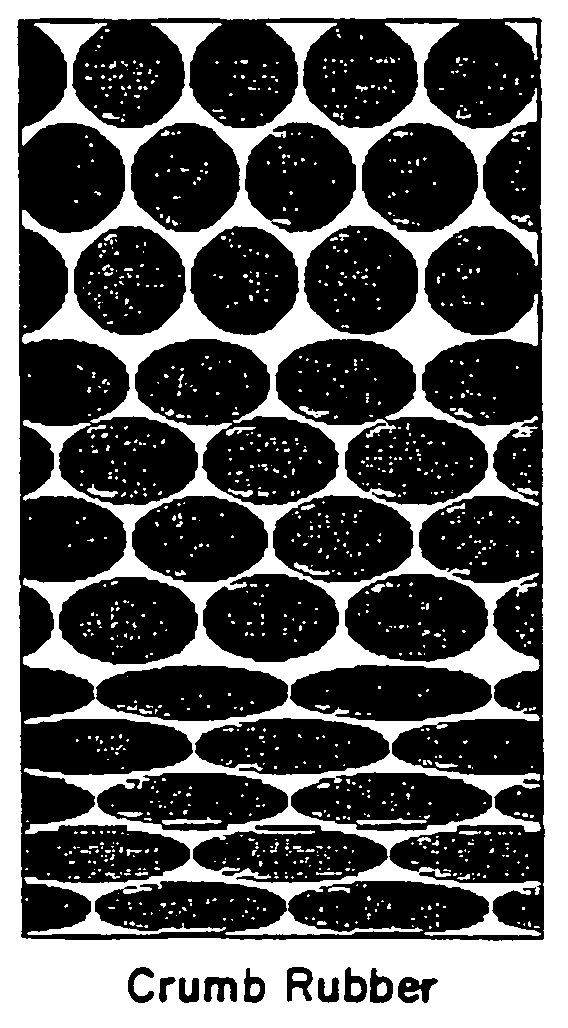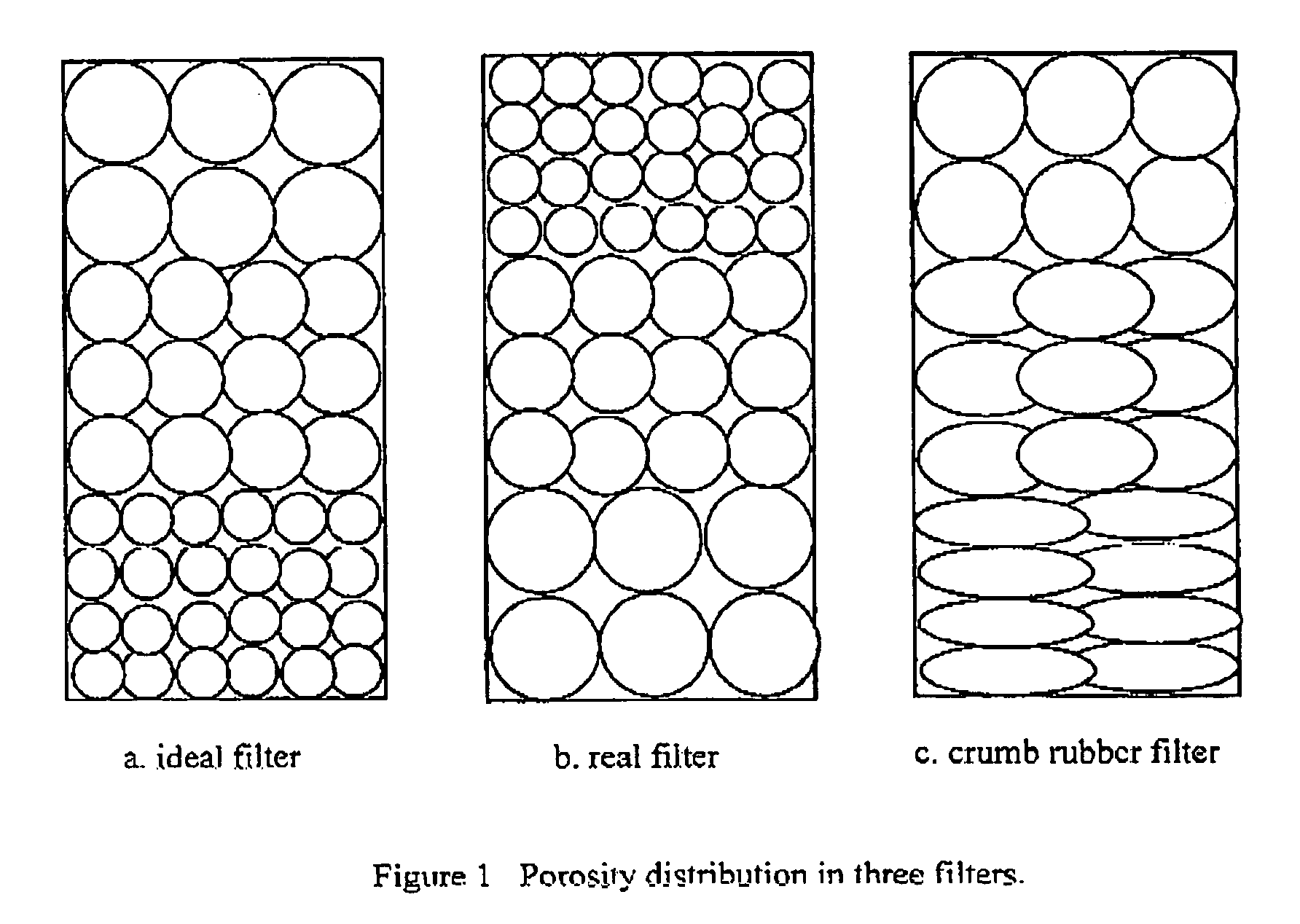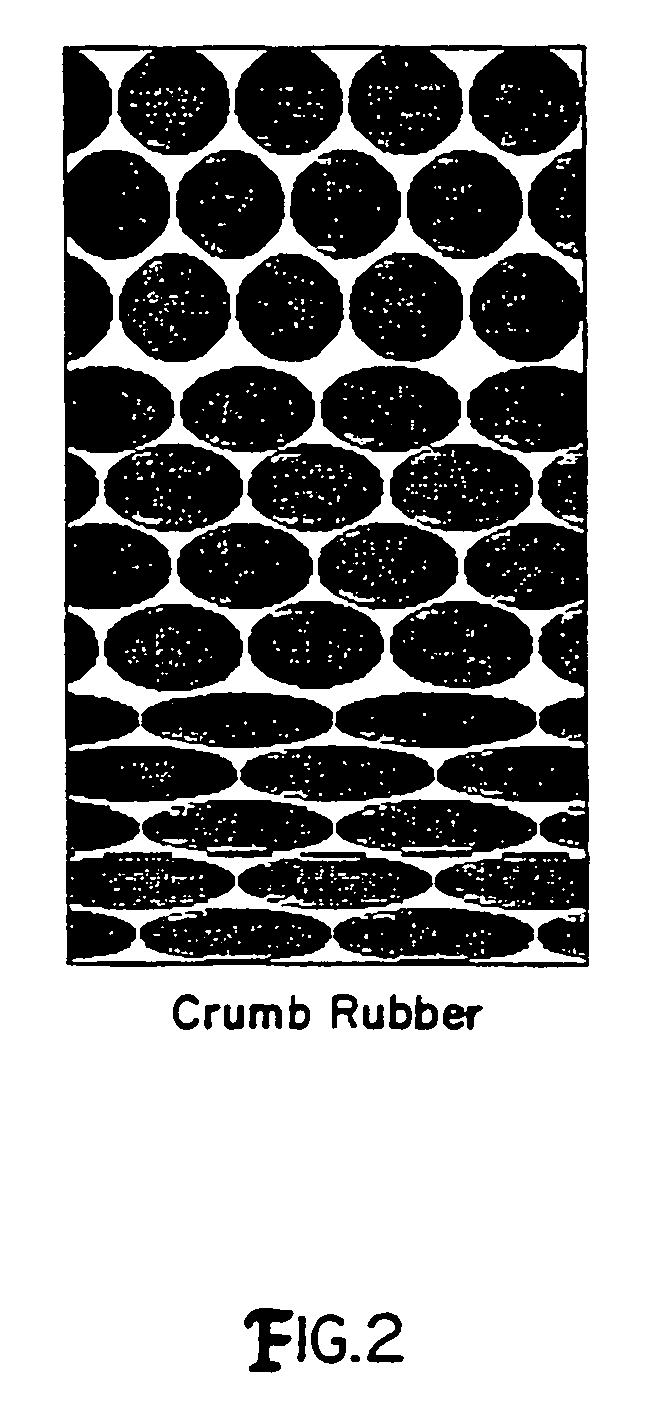Method of using waste tires as a filter media
- Summary
- Abstract
- Description
- Claims
- Application Information
AI Technical Summary
Benefits of technology
Problems solved by technology
Method used
Image
Examples
Embodiment Construction
[0012]The present invention is method of using crumb rubber from recycled tires as a filter media. The use of crumb rubber as a media differs from conventional sand or crumb rubber media, 36 inches, was chosen to be comparable with the dual media filter. Two sizes of crumb rubber were investigated, the first media size of 10–16 mesh and the second size of −10 mesh. The 10–16 mesh particle size is defined by crumb rubber particles sizes that pass through a 10 mesh sieve, but not a 16 mesh sieve. The −10 mesh particle size is defined by crumb rubber particles sizes that do not pass through a 10 mesh sieve. The 10–16 mesh size of crumb rubber tends to be in a ball shape, while the −10 mesh size of crumb rubber tends to be in a bar shape several millimeters in length. Each media was evaluated at several filtration rates ranged from 5 to 20 gpm / ft2. In addition, each media was run with clean water to determine clean bed headloss at several flow rates.
[0013]Influent and effluent samples w...
PUM
| Property | Measurement | Unit |
|---|---|---|
| Mesh size | aaaaa | aaaaa |
| Size | aaaaa | aaaaa |
| Depth | aaaaa | aaaaa |
Abstract
Description
Claims
Application Information
 Login to View More
Login to View More - R&D
- Intellectual Property
- Life Sciences
- Materials
- Tech Scout
- Unparalleled Data Quality
- Higher Quality Content
- 60% Fewer Hallucinations
Browse by: Latest US Patents, China's latest patents, Technical Efficacy Thesaurus, Application Domain, Technology Topic, Popular Technical Reports.
© 2025 PatSnap. All rights reserved.Legal|Privacy policy|Modern Slavery Act Transparency Statement|Sitemap|About US| Contact US: help@patsnap.com



